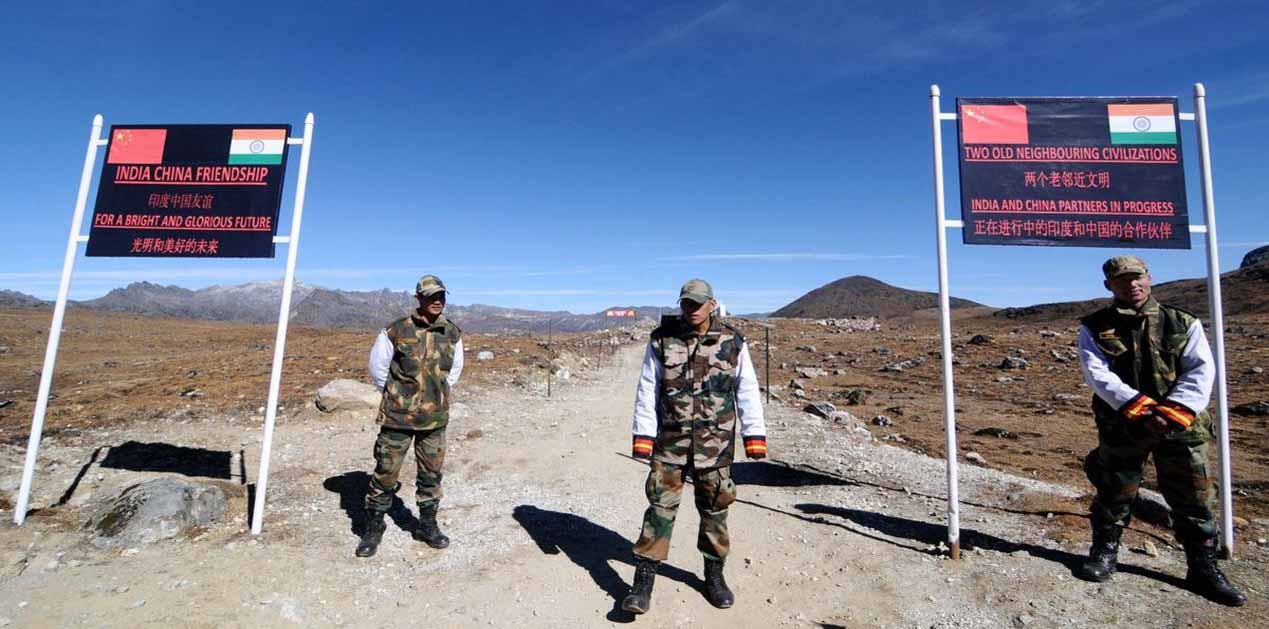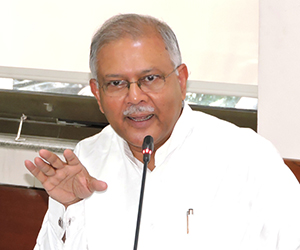(Ambassador Ashok K Kantha was India’s envoy to China before the current incumbent took over from him. Retiring from the Indian Foreign Service last year, presently he is the Director of Institute of Chinese Studies and a Distinguished Fellow at the Vivekananda International Foundation, New Delhi. In an interview to the noted journalist Shri Saikat Datta for <scroll.in >, Amb Kantha gave his comments on the stand-off between India and China at the India-Bhutan-China tri-junction and its eventual resolution. – Ed)
Q: India and China have had a series of bilateral discussions on resolving the border dispute for over a decade but seem to have made little headway. What could be the possible reasons for such an impasse?
Comments: Since the talks between the Special Representatives [of India and China] commenced in 2003, there was a major breakthrough in April, 2005, when the Agreement on the Political Parameters and Guiding Principles for the Boundary Settlement was signed. Under the agreement, both sides decided to seek a “political settlement” of the boundary question in the context of their “overall and long-term interests” on the basis of several eminently sensible and pragmatic propositions. This involved the two sides giving up the earlier fruitless efforts to reconcile their highly divergent and entrenched historical narratives on the issue.
However, when negotiations moved to the next stage of exploring an “agreed framework” for a boundary settlement, the Chinese side started reinterpreting the agreed parameters and principles. The 2005 agreement requires the two sides to “make meaningful and mutually acceptable adjustments to their respective positions on the boundary question, so as to arrive at a package settlement”. In the negotiations leading up to the agreement and subsequently, India conveyed clearly that it could not make any major adjustments in the eastern sector, let alone cede Tawang or any of the areas with settled populations. Indeed, any pragmatic solution could involve “meaningful adjustments” in the position of India in the western sector and of China in the eastern sector, as the Chinese side had also proposed earlier as part of Deng Xiaoping’s “package” solution. There has been no breakthrough in negotiations on the “agreed framework” since 2005, as China has insisted on large concessions by India in the eastern sector, including in Tawang. Such an approach is a non-starter for India and is also contrary to the agreement of 2005, which requires both sides to “safeguard due interests of their settled populations in the border areas” and take into account “the actual state of border areas” in any boundary settlement.
In recent years, we have discerned little keenness on the part of China to move towards an early boundary settlement. It has also started describing Arunachal Pradesh as “Southern Tibet”. With the rise of China gathering strength and momentum, it appears to believe that time is on its side. Moreover, with nationalism becoming a more potent force shaping China’s domestic polity and its external behaviour, the talk of “not ceding an inch of territory” has been entrenched in its public discourse. I am, therefore, not optimistic about the prospects of an early settlement.
Q: The issue in the India-China-Bhutan tri-junction seems to be unprecedented due to several reasons. India sent across troops to Bhutan to aid the Royal Bhutanese Army to resist Chinese moves to build a road that alters the nature of the territory under dispute and in violation of the bilateral talks between Bhutan and China. Was India right in sending across such help?
Comments: As Bhutan has pointed out in its statement of June 29, China was attempting to construct a road inside Bhutanese territory, in direct violation of its commitment under the agreements of 1988 and 1998 to maintain status quo on the boundary. Bhutan has requested China to withdraw its personnel from Bhutanese territory and restore status quo as before June 16 when the Chinese construction party arrived on the scene. India cannot afford to let China unilaterally change the tri-junction point, which it committed in writing to discuss and finalise with India and Bhutan. Any forced change in the status quo in Doklam has major security implications for India. Clearly, it is China which is acting contrary to its understandings with both Bhutan and India and trying to create new facts on the ground, as it has done elsewhere, including in the South China Sea. Acting in close coordination with Bhutan, India has rightly stepped in to persuade China not to do so.
It is important also to address the disingenuous and spurious claim made by China that the boundary in the Sikkim sector is all settled and well-defined. In this sector, India and China are in agreement on the “basis of alignment”, which is the highest watershed, but both sides are fully aware that more negotiations are required to delineate the alignment of the boundary on maps and demarcate it on the ground. There are significant differences with regard to the tri-junction point, as can be seen clearly from the maps of India, China and Bhutan. India and China had agreed in writing in 2012 that the tri-junction points would be finalised through consultations among the three countries concerned. There are also well-known differences on interpreting the watershed boundary between India and China in the Sikkim sector. These differences have led to incidents in the past in northern and eastern Sikkim. Until now, China has been pressing India to agree on the boundary in the Sikkim sector as an “early harvest” in the boundary talks, and now it is suddenly claiming that it is officially delimited and all settled. China must give up the habit of treating its contested territorial claims as “indisputable” and acting accordingly.
Q: The Chinese seem to have reacted sharply to the move and some media columns have claimed that this will pave the way for China to intervene in the bilateral dispute between India and China in Jammu and Kashmir. Is this a credible threat?
Comments: Unfortunately, China has already inserted itself into this issue in many ways, through the so-called boundary agreement with Pakistan in 1963 and more recently upgradation of the Karakoram Highway and development of the “China-Pakistan Economic Corridor” through Pakistan-occupied Kashmir and the reported deployment of its military personnel in Pakistan-occupied Kashmir [PoK]. Against this background, China is no position to play a “constructive role” in the Jammu and Kashmir issue, as it has gratuitously offered to do. On our part, we must factor in the deepening of Sino-Pak strategic linkages in our security calculus.
Q: The Chinese media has been unusually bellicose, with some newspapers claiming that the standoff could lead to war or other unintended consequences. How seriously should China watchers take such narratives and how should they interpret them?
Comments: Ordinarily, one tends to discount to some extent the jingoistic rhetoric of media outlets like the Global Times, even though they are part of the official establishment. However, the present media campaign is being orchestrated to send out a forceful message to India and Bhutan, though some of the more warlike noises might be to embellish that message and need not be taken literally. At the same time, we have to take note of the stridency and frequency of the pronouncements by the Chinese Foreign Office and Ministry of National Defence. These comments have not at all been helpful in our efforts to defuse the situation and will also negatively impact public perceptions about China in India.
Q: The main concern for India has been the gains that the Chinese military will make if they are able to push Bhutan to grant concessions to them on its eastern and western borders and establish diplomatic relations with the country. How do you view such concessions and its impact on India?
Comments: Despite the huge asymmetry in the size, strength and resources of the two countries, Bhutan has held its ground in protracted boundary negotiations with China. I do not want to comment on the specifics of these negotiations. However, as far as the two tri-junction points involving India, Bhutan and China are concerned, we have direct and vital stakes. We cannot allow China to unilaterally determine the tri-junction points by changing facts on the ground, as it is attempting to do in the Doklam area. If the Chinese were allowed to proceed with construction of a motorable road from Doko La towards the Bhutan Army camp at Zompelri, the Chinese military presence and de facto tri-junction point would have shifted southwards, with major bearing on our security, particularly in the context of the Siliguri Corridor.
Q: It has been reported that the Chinese leadership displayed several significant gestures of friendship and cooperation during your tenure as India’s ambassador to China. Do you think that the Chinese leadership’s position has changed and if so, why?
Comments: It is true that we saw marked progress in India-China relations, particularly as a result of President Xi’s visit to India in September 2014 (notwithstanding the military face-off in Chumar and Demchok) and Prime Minister Narendra Modi’s visit to China in May 2015. Since then, we have seen a pronounced trend of China becoming more assertive and less sensitive to India’s interests, concerns and aspirations on a range of issue, including CPEC [China-Pakistan Economic Corridor], NSG [Nuclear Suppliers Group] and Masood Azhar. Differences have been articulated by both sides in the public domain, which has made the task of managing this sensitive relationship even more challenging. We saw some hopeful signs emerging from the PM’s meeting with President Xi at Astana last month, but then Doklam happened. We need sustained strategic consultations to bring the relationship back on a pragmatic footing.
Q: As an experienced China watcher, what would you prescribe to resolve it?
Comments: I do hope that like other recent stand-off situations, the current face-off will be resolved through patient talks, though it might take much longer this time. Looking at the angry rhetoric emanating from China, I am reminded of what the Chinese called “close confrontation” in Wangdung in 1986, which was also sorted out through painstaking efforts, without compromising on our vital interests.
The first requirement is to defuse tensions by avoiding any provocative action on the ground and eschewing harsh and self-righteous comments, which has been on display on the Chinese side. China will be well-advised to heed the Bhutanese request to restore status quo as before June 16.
Indeed, there can be withdrawal of both Chinese and Indian personnel from the area of stand-off. Bhutan and India believe that this area is Bhutanese territory, even though China claims it. This also involves differences between India and Bhutan on the one side and China on the other on the location of the tri-junction point. Obviously, this will require consultations and agreement among the three countries. Until then, China must not seek to unilaterally determine the tri-junction point by altering facts on the ground, in violation of its separate understandings with both Bhutan and India. The stand-off can be terminated with reciprocal withdrawal of Chinese and Indian personnel, even while discussions continue on the tri-junction issue, which is not likely to be settled anytime soon.
Image Source: https://d1u4oo4rb13yy8.cloudfront.net/article/63294-tldhzhecqx-1500219721.jpg











Post new comment